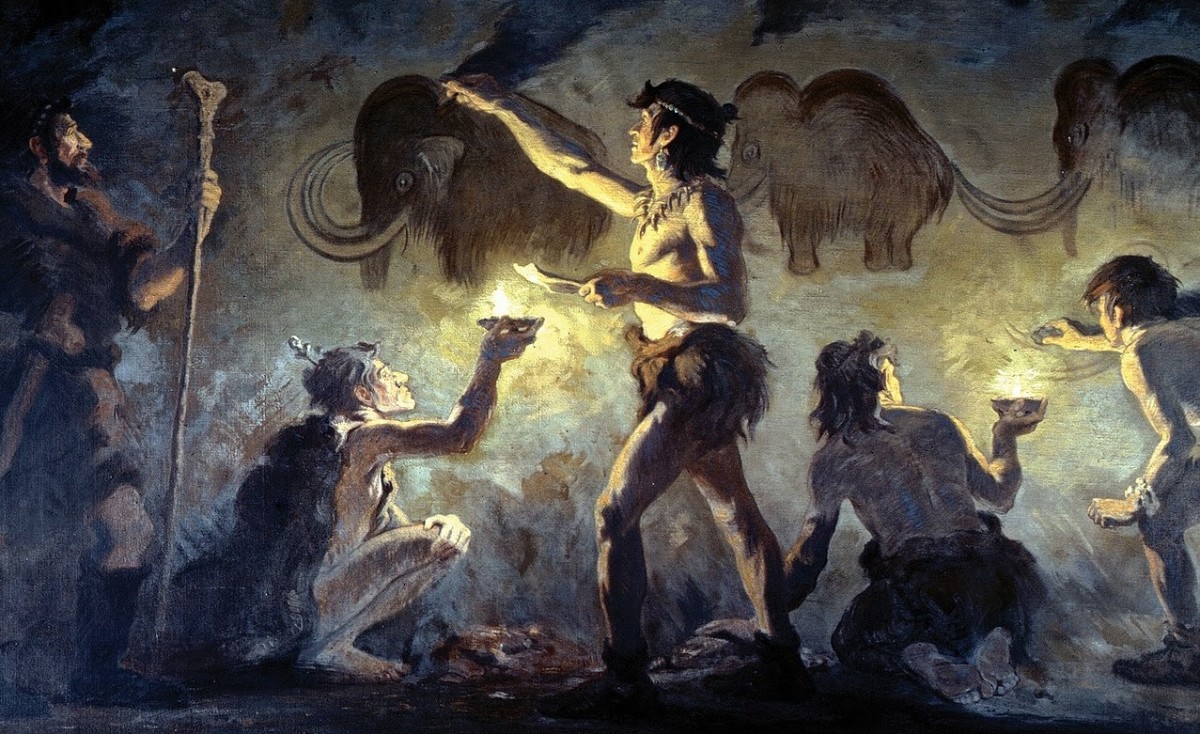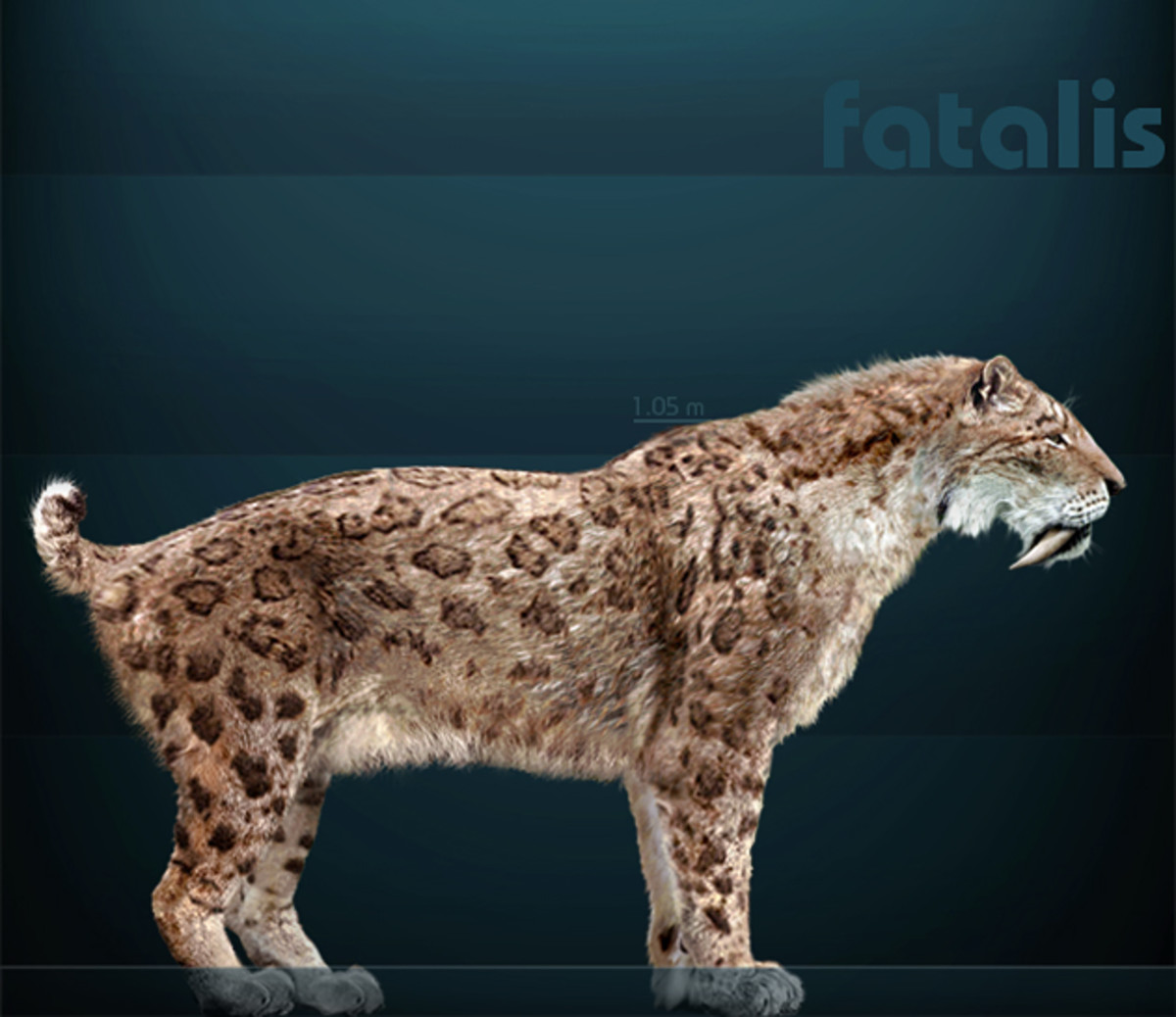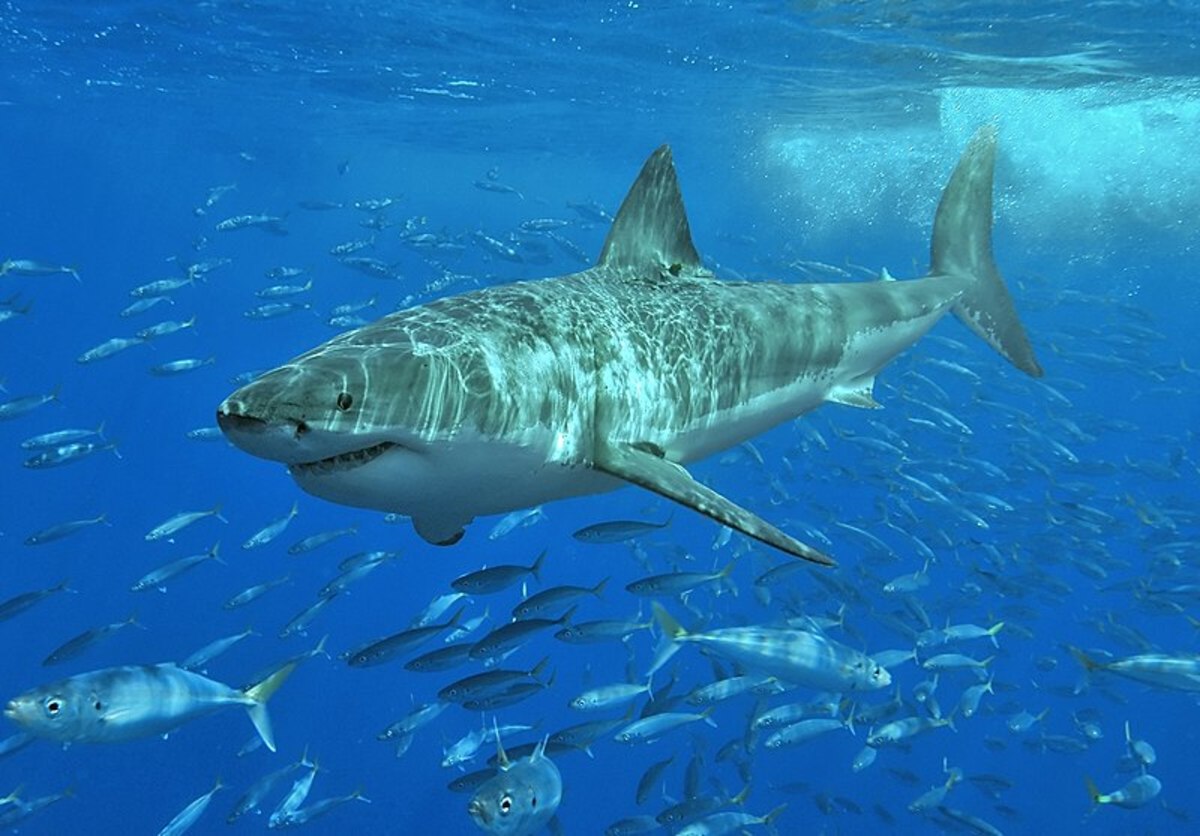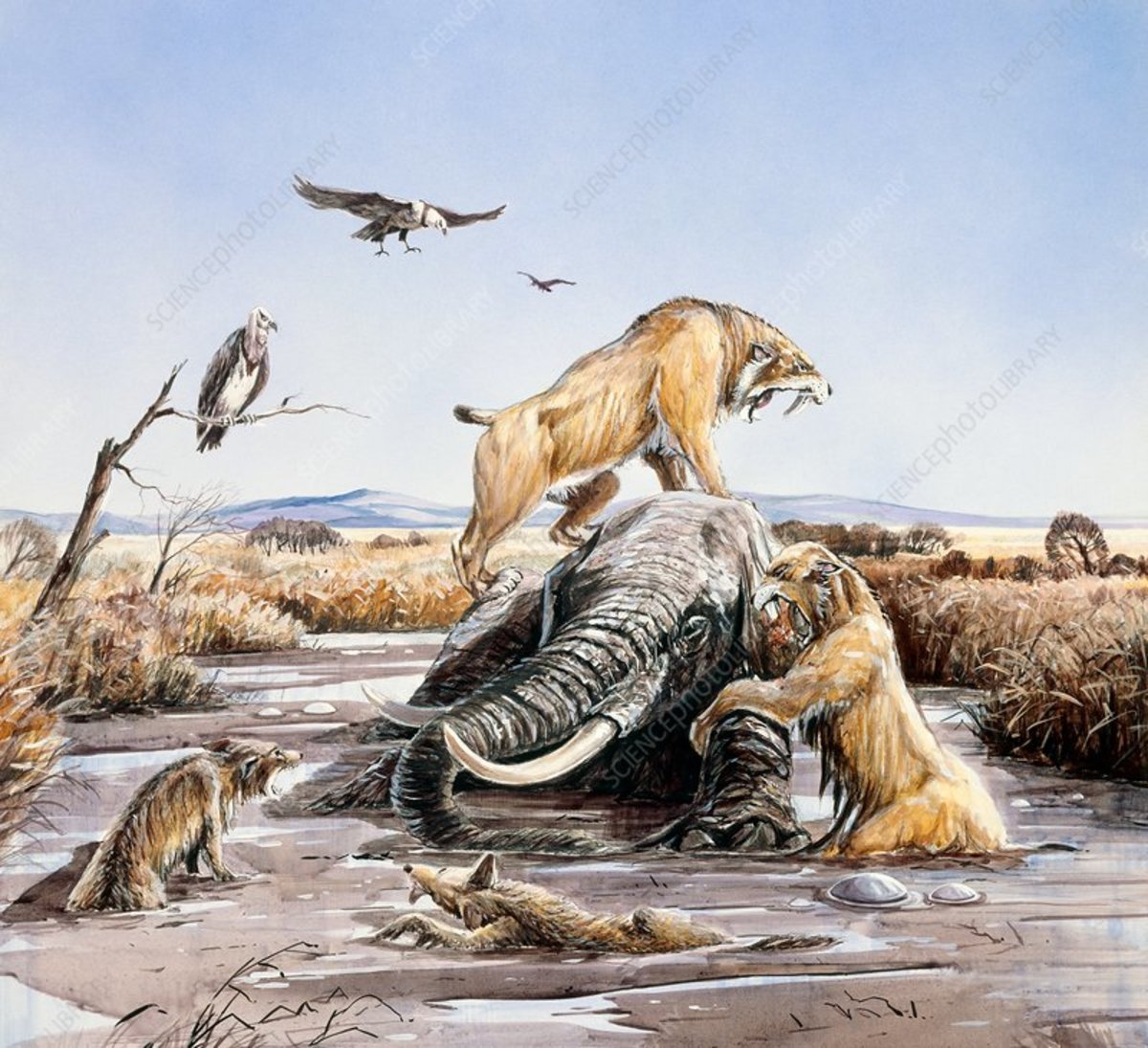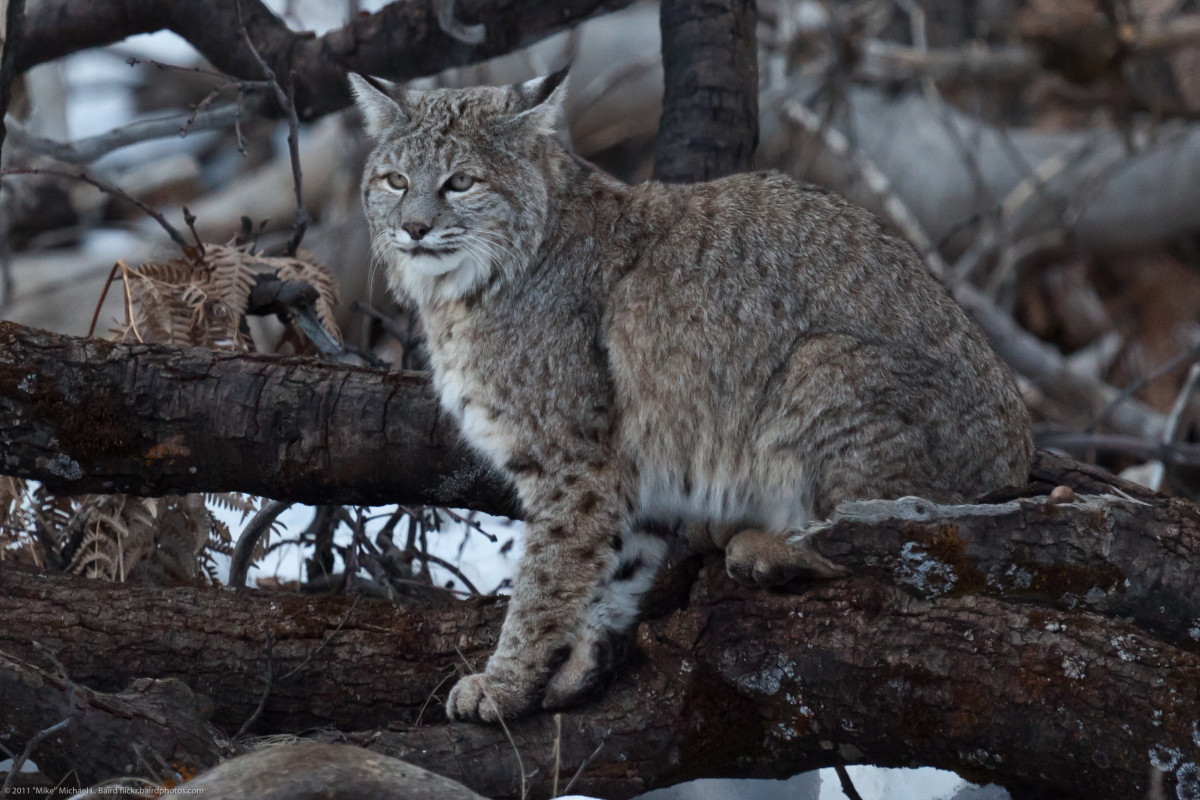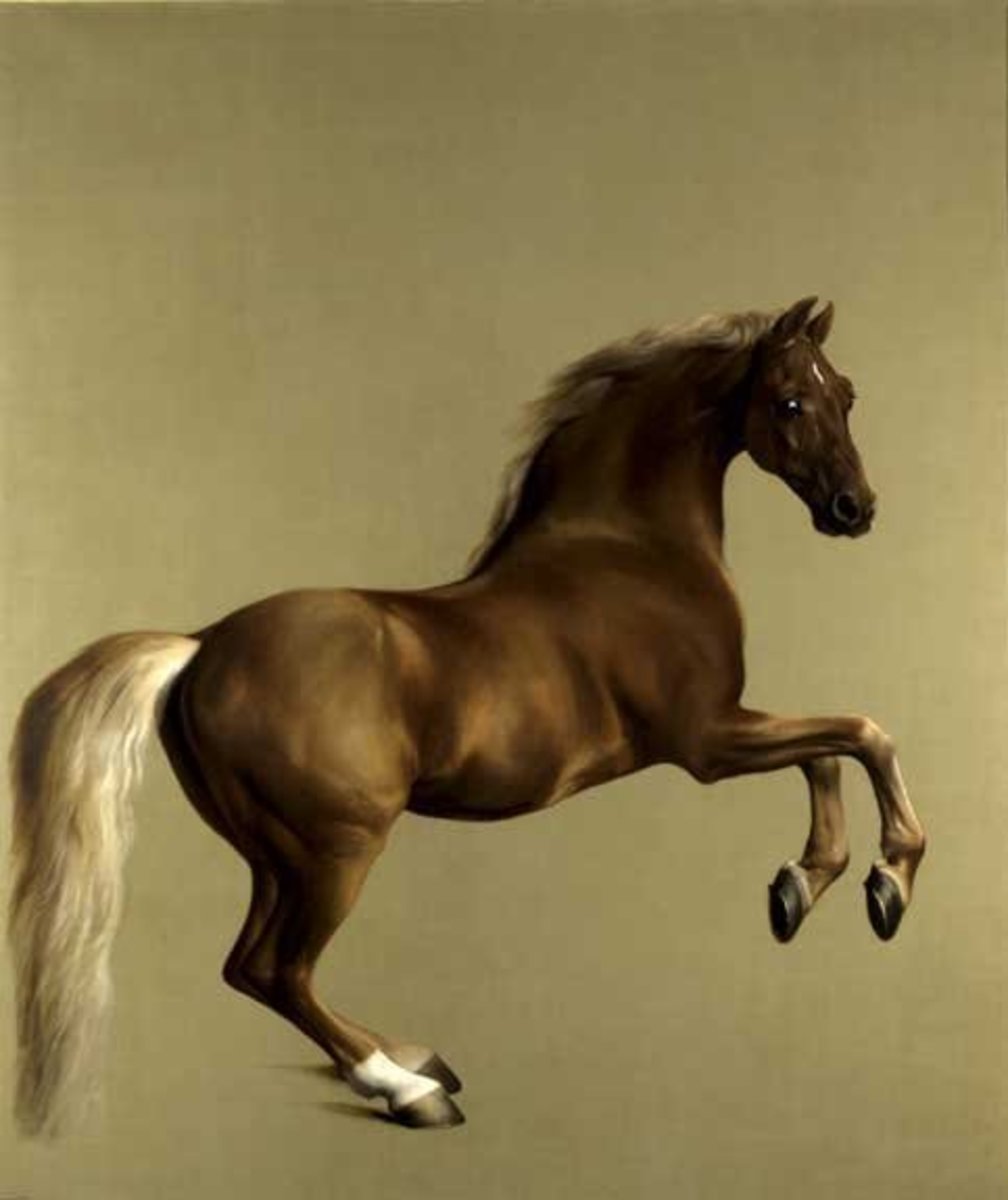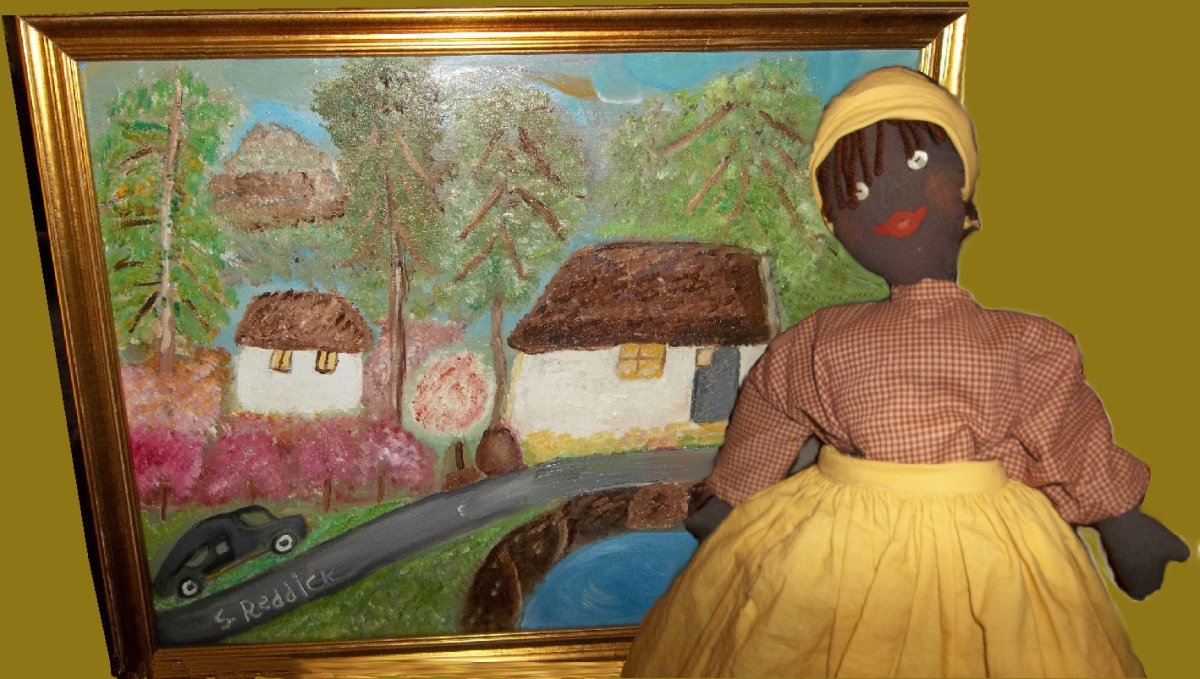So Long Smilodon

The Sad Tale of the Saber-Tooth
Who mourns the passing of the Smilodon? He was another feisty carnivore lost when people began to take over the world
Smilodon became extinct around 10,000 BCE, when so many other large herbivorous and carnivorous mammals went under the axe.
Today we know of Smilodon only from his fossil remains which are found all over North America, especially in the La Brea tar pits.
Humans are responsible
Humans are responsible, for when they crossed the ice bridge over Bering Strait into North America at the end of the last Ice Age, they traveled right to the tip of South America causing wholesale extinctions of species along the way.
Everyone remembers the saber tooth cats for their teeth but they were simple, social creatures who lived and hunted like lions today. Friendly, family animals who just happened to have enormous, frightening, deadly-sharp canines.
Ferocious predators indeed - but no match at all for the deadly humans
Smilodon Fatalis - What a name!
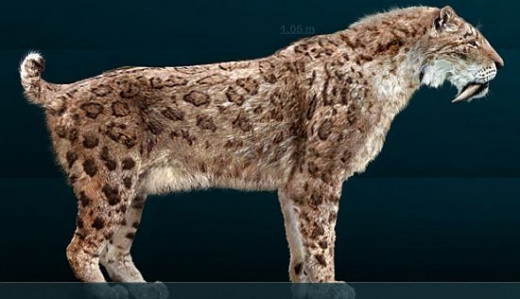
You can see by the reconstruction above that the Smilodon was a handsome animal.
Although commonly called the "saber-toothed tiger," the Smilodon is part of a different subfamily and not closely related to the tiger at all. (It seems a shame to discard the glamour of the name). However, he was large and superbly muscular, and pretty much the same size of a modern-day tiger.
The idea of linking a Smilodon with a tiger gives the impression of a striped coat. But colouring depends on environment. Stripes are good news only in wooded areas where they would serve as efficient camouflage. In open grassland areas, any cat needs a solid tawny brown, like lions, a shade which blends into grasslands.
The stripe patterns on Smilodon were perhaps not as bold as a tiger, since in most cases they appear to have lived in less densely forested areas and not in a jungle. A wider or more spot or 'smudge' pattern would have been more adaptive, as it is in cheetahs and leopards.
The Smilodon Method
Although the Smilodon has no close living relatives, we can reconstruct how this cat looked by comparing its bones with those of large cats living today. Very powerful front legs and a short tail show that these cats used stealth and ambush rather than speed to capture prey.
I prefer this method myself, it takes cunning, forward planning and great patience to lie in ambush rather than hurtling off after a running victim. The Smilodon would have used its long canines to chomp into a jugular or bite open a soft belly.
Oh those teeth!
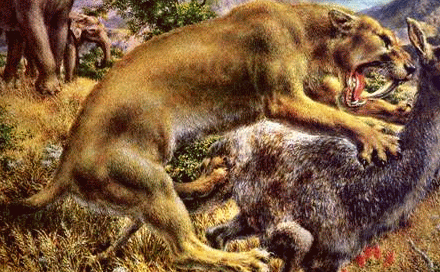
If Smilodon bit into prey that was struggling wildly -- as can a lion -- it would have risked serious injury and perhaps even breakage of its own skull and teeth. He could only have bitten prey that had been pinned down first, and here's the real source of the might of the saber-tooth..
His body was immensely powerful, more bear-like than cat-like. Huge forearms were equipped with large dew-claws on the thumbs that would have acted like grappling hooks, allowing it to grip and wrestle even bison-sized animals to the ground with relative ease.
From that position, Smilodon used its knife-like teeth for the coup de grace, piercing deeply into the prey's neck. The tooth function was to open deep wounds in vulnerable soft tissue -- most likely the windpipe or major blood vessels of the neck.
This highly refined killing style may have contributed to Smilodon's extinction. Although superbly adapted to taking big prey, he was massively over-engineered for a life subsisting on medium-sized or small animals.
Exactly what reduced the number of big prey is open for debate, but I suspect the arrival of humans played a major role.
La Brea Tar Pits

Tar bubble at the La Brea tar pits, Los Angeles, California. Photo Daniel Schwen
Tar pits form when crude oil seeps to the surface through fissures in the Earth's crust; the light fraction of the oil evaporates, leaving behind the heavy tar, or asphalt, in sticky pools.
The La Brea Tar Pits in California are one of the richest sources of mammal fossils in the world. Approximately 60 species have been identified, not just the smilodon, but bears, wolves, camels, bison, mastodon and more. (There were human bones here too, including a pelvis and a skull, as well as a number of artifacts such as bone hairpins).
Tar from the La Brea tar pits was used for thousands of years by local native Americans, as a glue and as waterproof caulking for baskets and canoes. After the arrival of Europeans, the tar from these pits was mined and used for roofing by the inhabitants of the nearby town of Pueblo de Nuestra Senora la Reina de Los Angeles.
The bones occasionally found in the tar were first thought to be those of unlucky cattle and it wasn't until 1901 that the first scientific studies of the fossils were made.
Snuggle up to a Smilodon

Clash of the Sabers!
Have you met my wild ancestor?
African Wild Cat
All the domestic cats you know today have a common ancestor - and that ancestor still runs free across the savannah which is a lot more than you can say for humans

